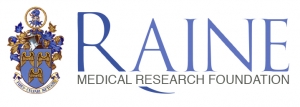Raine Visiting Professor Lecture – 13 October 2016
Dr Gijs van Soest
will present a Raine Lecture entitled:
Imaging of atherosclerosis with light and sound
on 13 October 2016 at 12 pm
at the McCusker Auditorium, Harry Perkins Institute of Medical Research
All welcome
Dr Gijs van Soest is an Associate Professor in the Department of Biomedical Engineering of the Thorax Centre at the Erasmus University Medical Centre in Rotterdam, The Netherlands. He worked in a cardiology clinic as a translational researcher, working at the interface between clinical, basic science and engineering disciplines in Rotterdam from 2005. He obtained an MSc degree in Physics in 1997 at the University of Groningen. He was awarded his PhD from the University of Amsterdam in 2001.
Dr Van Soest currently leads the research effort in the Thorax Centre on the development and clinical translation of catheter-based imaging technologies. In his research, he bridges (cardiovascular) medicine, biomedical engineering and optical physics. His integrates a fundamental understanding of the physics and engineering principles of the optical, photoacoustic, and ultrasonic imaging with well-rounded insights in their clinical application. This has led to impressive technological achievements in catheter-based imaging that he and his team pushed from concept-phase through in vitro and in vivo tests, into clinical evaluation. He is an active member of the International Working Group on Intravascular OCT Standardization and Validation and frequently lectures at medical courses on cardiovascular imaging, as well as at engineering conferences on biomedical optics.
Atherosclerosis kills through rupture of lipid-containing plaques: contact between necrotic material and blood triggers clot formation, which may lead to distal embolization in the coronary vessels or the brain. Currently, there are no reliable prognostic biomarkers for these cardiovascular and cerebrovascular events. In this lecture, he will discuss how new imaging technology can identify unstable plaques before they rupture, and how imaging can guide interventions on plaques. Specifically, he will present recent work on Heartbeat OCT, a high speed optical method for acquiring microscopic resolution images of a complete vessel in less than a second, and will cover imaging of plaque composition by OCT and photoacoustics, a technique that combines light and sound.
University Host:
Professor David Sampson
School of Electrical, Electronics & Computer Engineering
The University of Western Australia
Telephone: 6488 7112
Email: david.sampson@uwa.edu.au

